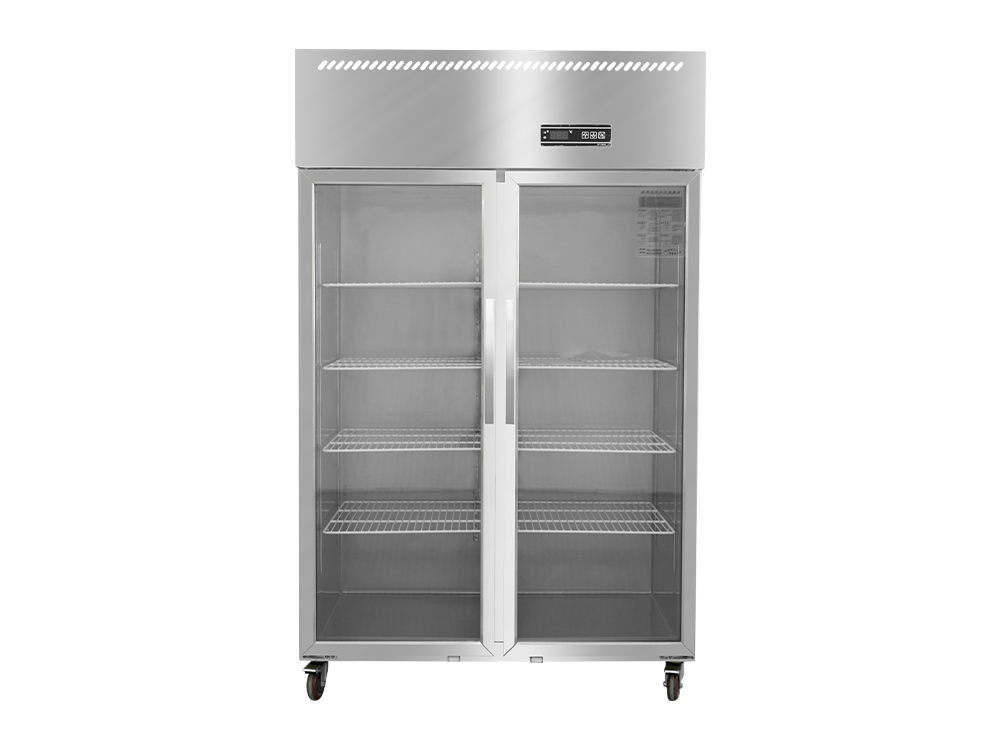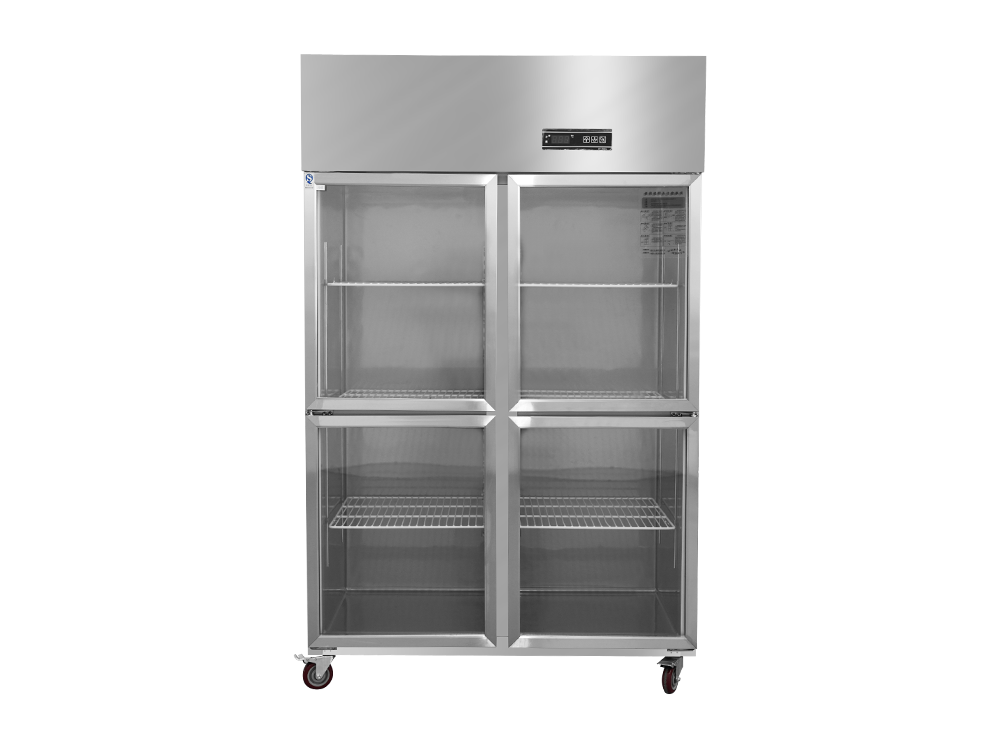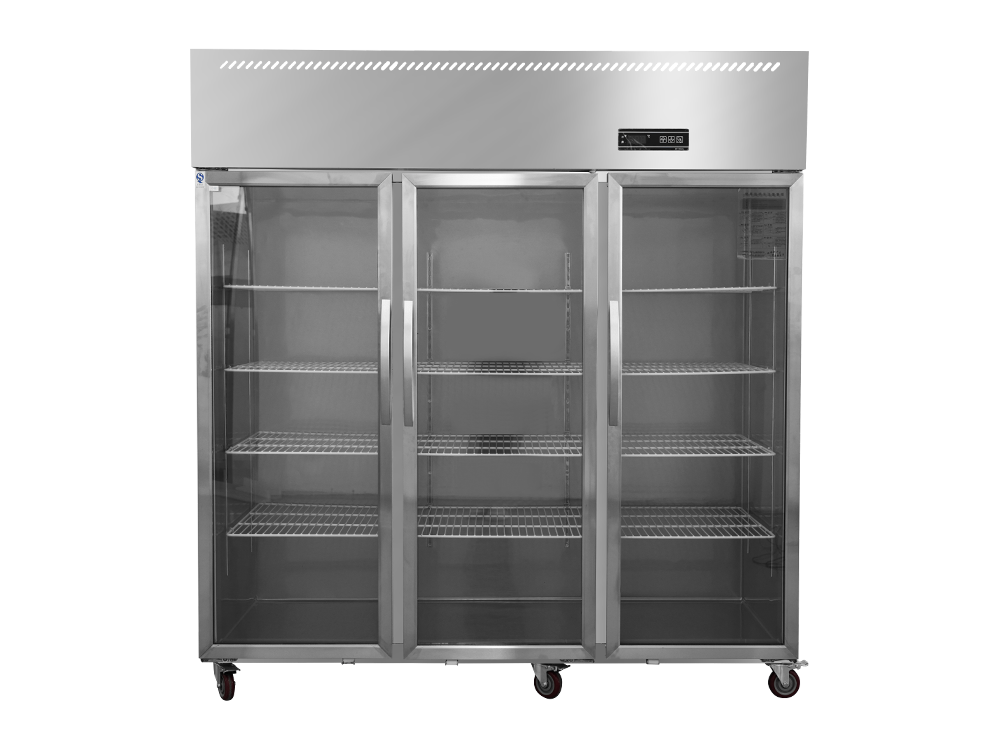In modern industrial production, commercial cold chain, and high-end laboratory environments, the performance of refrige...
READ MORE-
-
The Core Equipment of the Cold Chain Industry: The Role and Technological Trends of Counter Chillers
Cold chain logistics is an indispensable part of modern supply chain management, especially in the transportation and st...
READ MORE -
Recently, Zhejiang Xingbao Electrical Appliance Co., Ltd. successfully completed its participation in the Italian profes...
READ MORE -
Refrigerated displayers, as a crucial component of commercial cold chain equipment, are widely used in supermarkets, con...
READ MORE -
In modern kitchen design and commercial operations, under counter freezers are becoming indispensable refrigeration equi...
READ MORE
What types of products is the glass door air cooling showcase best suited for displaying (e.g., beverages, dairy, desserts)?
In the competitive landscape of retail and food service, the effective presentation of perishable goods is not merely a matter of storage but a critical component of commercial success. The glass door air cooling showcase stands as a pivotal solution in this arena, merging preservation functionality with powerful visual merchandising. This equipment, often referred to interchangeably as a glass door merchandiser or merchandiser cooler, is engineered to maintain specific low-temperature environments while inviting customers with a clear view of its contents. The core question for any business investing in such a unit is: what products can it display most effectively? While the applications are broad, they are defined by the unique operational principles of the cabinet.
The operational principle of the glass door air cooling showcase
To understand its ideal applications, one must first grasp the fundamental technology behind a glass door air cooling showcase. Unlike pass-through deli counters or open-air multideck displays, these units are fully enclosed, typically with two or three panes of glass on the door for superior thermal insulation. The “air cooling” system refers to a forced-air convection mechanism. A quiet, efficient evaporator and fan system circulate cold air evenly throughout the interior cavity. This design creates a stable, uniform temperature from the top to the bottom shelves, which is a critical factor for product safety and quality.
The enclosed nature of a merchandiser cooler offers significant advantages. It drastically reduces temperature fluctuation, which is a common issue with open-front displays that are exposed to ambient store conditions. This stability is essential for preserving the freshness, texture, and taste of sensitive items. Furthermore, the glass door acts as a barrier against dust, contaminants, and unnecessary handling, while the integrated LED lighting illuminates the products, enhancing their color and appeal. The energy efficiency of these sealed systems is notably higher, as the cold air is contained within the unit, leading to lower operational costs—a key consideration for any business. Manufacturers with advanced R&D capabilities, such as those with laboratories focused on refrigeration technology, are able to refine these systems for even greater temperature precision and energy savings, often achieving high standards like the European A+ energy rating.
The premier category: beverages and drinks
Perhaps the most ubiquitous application for a glass door merchandiser is the display of beverages. This category is a perfect match for the unit’s capabilities for several reasons. First, beverages, particularly water, soft drinks, juices, and beer, are best served and are most appealing to consumers when chilled to a specific, consistent temperature. The forced-air cooling system of a glass door air cooling showcase excels at maintaining this consistent chill, ensuring every bottle or can is perfectly cold.
From a merchandising perspective, the clear glass door creates an irresistible visual impact. The organized rows of brightly labeled bottles and cans, enhanced by internal lighting, become a powerful impulse-buy trigger. For establishments like convenience stores, supermarkets, bars, and hotels, the merchandiser cooler is not just a storage appliance but a primary sales tool. The ability to stock a high volume of products in a relatively small footprint, while keeping them secure and visible, makes it indispensable. The sturdy shelving, often adjustable, can be configured to accommodate containers of various heights, from small energy drinks to large plastic bottles. This versatility solidifies the position of beverages as a premier product category for this type of display.
Preserving freshness: dairy products
Dairy products represent another category supremely well-suited for the controlled environment of a glass door air cooling showcase. Items such as milk, yogurt, cheese, butter, and cream are highly susceptible to spoilage caused by temperature variations. The consistent cold chain maintained by a high-quality glass door merchandiser is essential for preserving their freshness, extending shelf life, and ensuring food safety.
For specialty food stores, gourmet markets, and supermarket dairy sections, the presentation of these products is crucial. The clear view offered by the glass door allows customers to easily identify their preferred brands and types of cheese or yogurt without the need to open the door, thus maintaining the internal temperature. The even air circulation prevents the formation of “hot spots,” which can cause some products to degrade faster than others. This is particularly important for delicate artisanal cheeses and fresh dairy products whose quality is paramount. A reliable merchandiser cooler from a manufacturer that prioritizes quality control and holds relevant food safety certifications provides the assurance that these sensitive goods are stored under optimal conditions, protecting both the inventory and the consumer.
The art of display: desserts and confectionery
The display of desserts and confectionery items is where the glass door air cooling showcase truly transforms into a stage for culinary art. From delicate pastries and cakes to colorful puddings and specialty chocolates, these items require not only precise temperature control to maintain their structure and taste but also an impeccable presentation to stimulate desire.
The glass door air cooling showcase provides a pristine, protected environment that shields delicate desserts from airborne particles and physical damage. The constant, slightly higher temperature range (compared to a deep freezer) prevents frozen cakes from thawing incorrectly and keeps cream-based desserts firm yet palatable. For patisseries, bakeries, and restaurant dessert stations, the visual appeal is a direct driver of sales. The internal lighting of the cabinet highlights the intricate details and vibrant colors of the desserts, making them look fresh and inviting. The following table illustrates typical temperature ranges for different dessert types within a single, well-calibrated unit:
| Product Type | Ideal Display Temperature Range | Key Consideration |
|---|---|---|
| Cream Cakes & Pastries | 2°C - 5°C (36°F - 41°F) | Prevents melting of cream and icing. |
| Cheesecakes | 1°C - 4°C (34°F - 39°F) | Maintains firm texture and freshness. |
| Fruit Tarts | 3°C - 6°C (37°F - 43°F) | Keeps fruit from wilting and pastry crisp. |
| Specialty Chocolates | 16°C - 18°C (61°F - 64°F) | Requires a dedicated warmer cabinet to prevent bloom. |
It is important to note that while a standard merchandiser cooler is ideal for refrigerated desserts, products like fine chocolates often require a distinct type of cabinet with warming capabilities to prevent sugar bloom.
Beyond the core: other suitable product categories
The utility of the glass door air cooling showcase extends well beyond beverages, dairy, and desserts. Its versatile design makes it suitable for a wide array of other perishable goods across various retail and food service industries.
In prepared food sections and delicatessens, these units are ideal for displaying pre-made salads, sandwiches, sushi, and ready-to-eat meals. The clear presentation assures customers of freshness and hygiene. For florists, a slightly modified version can be used as a floral display case to keep cut flowers fresh and vibrant for longer periods. In pharmaceutical settings, the stability and cleanliness offered by a glass door merchandiser make it suitable for storing certain temperature-sensitive medicines and vaccines, provided it meets the specific regulatory requirements for medical storage. The robustness of a well-constructed cabinet, featuring durable materials and reliable components, ensures it can withstand the demands of these diverse applications.

 English
English 中文简体
中文简体 Español
Español عربى
عربى



